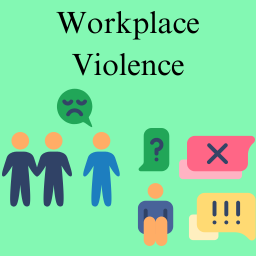What Is Nursing Profession and Workplace Violence. According to the World Health Organization (WHO), “between 8 and 38% of nurses suffer from health-care violence at some point of their career” [1]. Compared to other workplaces, health care workers have a higher risk of getting physically, sexually, or psychologically injured.
The Nursing Profession and Workplace Violence Introduction
Workplace violence in the nursing profession is an issue of growing concern, highlighting the need for effective strategies and interventions to ensure the safety of healthcare workers. Defined by the National Institute of Occupational Safety and Health (NIOSH) in 2002 as “violent acts, including physical assaults and threats of assaults, directed towards persons at work or on duty,” workplace violence spans a range of actions that can significantly impact the health and well-being of nurses.
Four Categories of Workplace Violence
Workplace violence can be classified into four main types, each with unique characteristics and implications:
- Type I (Criminal Intent): This category involves violent acts committed in conjunction with a criminal activity such as robbery, where the perpetrator has no legitimate relationship with the workplace.
- Type II (Customer/Client): Here, the perpetrator is someone who the worker is serving at the workplace, such as a patient in a healthcare setting, who becomes violent during the interaction.
- Type III (Worker-on-Worker): Violence in this category involves employees or past employees who commit acts of violence against their coworkers.
- Type IV (Personal Relationship): This type involves perpetrators who have personal relationships with employees, such as domestic violence incidents that spill over into the workplace.
Homicide as a Major Cause of Death
Homicide has been one of the leading causes of occupational fatalities, consistently ranking among the top three causes of death in the workplace since 1990. Statistics from the Bureau of Labor Statistics (BLS) show that workplace violence was the third leading cause of occupational injury death among all workers and the number one cause among women as of the early 2000s. The decline in workplace homicides from 1,080 in 1994 to 609 in 2002, while significant, still underscores the critical nature of this issue, with firearms involved in 80% of workplace homicides.
Fatal and Non-Fatal Assaults
While fatal assaults in the workplace are highly publicized, nonfatal assaults are much more common and share many risk factors with fatal assaults, such as public-facing roles, dealing with volatile individuals, and working in isolated or community-based settings. Health care workers, particularly in non-retail environments, are often victims of nonfatal workplace violence. According to the Department of Justice’s National Crime Victimization Survey, from 1992-1996, around 1.9 million incidents of workplace violence were reported annually, with a significant portion of these incidents resulting in physical injuries requiring medical attention.
Reporting Workplace Violence
Despite the prevalence of workplace violence in healthcare, there is a notable underreporting of such incidents. Many healthcare facilities lead in nonfatal workplace assaults, yet only a fraction of violent incidents result in formal reports or compensation claims. This underreporting can be attributed to a variety of factors, including the normalization of violence in healthcare settings and the logistical challenges of reporting.
Incidence of Assault in Healthcare
Specific settings, such as psychiatric wards, have higher rates of violence, with environmental and organizational factors such as understaffing and lack of security measures exacerbating the risks. Research indicates that healthcare professionals working in mental health settings, or where there are high patient-to-staff ratios, face increased risks of assault.
Prevention Strategies
To address workplace violence, healthcare institutions must implement comprehensive violence prevention programs that include staff training in managing aggressive behavior, environmental modifications to enhance security, and policies that foster a culture of safety and respect. Research into effective prevention strategies often highlights the importance of administrative support and adequate staffing in reducing incidents of violence.
Outcomes of Intervention
The effectiveness of interventions aimed at reducing workplace violence in healthcare settings has varied. Programs that include training for staff, support for assaulted workers, and robust security measures tend to be more effective. However, ongoing evaluation and adaptation of these programs are necessary to ensure they meet the needs of a dynamic healthcare environment.
Conclusion
Workplace violence in the nursing profession poses significant challenges to healthcare providers. By understanding the types of violence, factors contributing to violent incidents, and effective prevention and intervention strategies, healthcare institutions can better protect their workers. Ultimately, addressing workplace violence is not only crucial for the safety of healthcare workers but also for the quality of care they provide to their patients. Ensuring a safe working environment is imperative for fostering a productive, healthy, and non-violent workplace.
Read More:
https://nurseseducator.com/didactic-and-dialectic-teaching-rationale-for-team-based-learning/
https://nurseseducator.com/high-fidelity-simulation-use-in-nursing-education/
First NCLEX Exam Center In Pakistan From Lahore (Mall of Lahore) to the Global Nursing
Categories of Journals: W, X, Y and Z Category Journal In Nursing Education
AI in Healthcare Content Creation: A Double-Edged Sword and Scary
Social Links:
https://www.facebook.com/nurseseducator/
https://www.instagram.com/nurseseducator/
